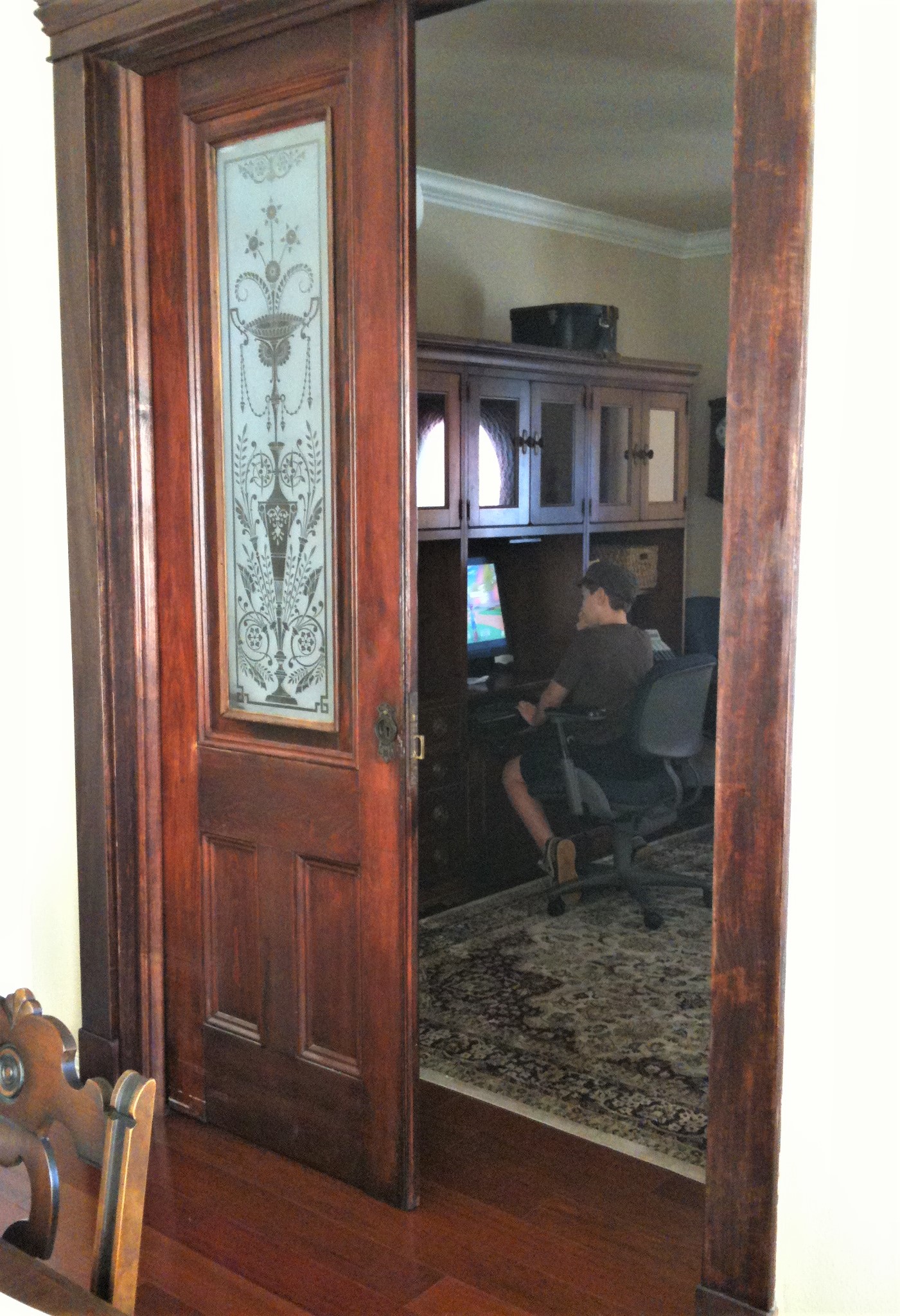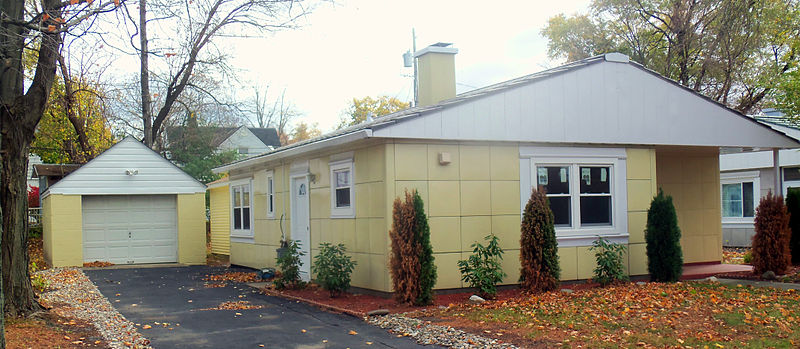Pocket door

|
| This photograph shows two pocket doors - one is open one is closed. The etched glass in the doors is roughly 150 years old. |
Contents |
[edit] Introduction
A pocket door is a sliding door that disappears completely into a space that has been created in the adjacent wall. Single or double versions are available. Unlike other types of sliding doors, most pocket doors are not made from glass, although they may feature glass windows, sometimes for decorative purposes.
[edit] History
Pocket doors originated in the 1850s, when they appeared both in the UK and the US. Their popularity grew in the 1880s as technological improvements were made to the installation methods. However, in the mid 1920s, their popularity began to fade and hinged doors became more fashionable. They once again sprang into favour in the 1950s, particularly in post-war housing.
[edit] Pocket doors in Lustron homes
Pocket doors were a common feature in a type of affordable housing in the US called Lustron houses. More than 1,000 of these homes were built after World War II to help address the housing shortage for returning veterans.

|
| This Lustron home ad is from 1948. |
Prefabricated from enameled steel, Lustron houses were designed by Carl Strandlund. Their primary purpose was to provide durable housing that was efficient in terms of space usage. According to the sales brochure, "all the floor space in the house is living space." This is why pocket doors were used throughout many of the model homes.
In the Lustron homes, the pocket doors were made from the same moulded steel and porcelain enamel coating as the interior and exterior panels and cabinetry; the pocket doors arrived preinstalled in the walls.
The majority of remaining Lustron homes can be found in the state of Illinois, although there are surviving homes throughout the US. Some Lustron homes have been included on the National Register of Historic Places.

|
| This is one of five homes included in the Lustron houses of the Jermain Street Historic District in Albany, New York, USA. |
[edit] Applications
Pocket doors continue to be useful in modern applications and renovations, especially in situations where there is not enough space for a standard door. Because they do not require the same amount of clear space to open and close, they can free up a significant portion of a room. This can be useful in small rooms.
Pocket doors are frequently found in bathrooms and cupboards. They are also effective in spaces such as workshops, home offices, libraries, sitting rooms and other multipurpose rooms.
[edit] Installation
Most pocket doors are installed on tracks on the floor or on rollers in a track in the ceiling. There is also an open pocket door, which is a wall-hung sliding door. This option can be suitable for installations that require ease of use and access.
[edit] Related articles on Designing Buildings Wiki
Featured articles and news
Art of Building CIOB photographic competition public vote
The last week to vote for a winner until 10 January 2025.
The future of the Grenfell Tower site
Principles, promises, recommendations and a decision expected in February 2025.
20 years of the Chartered Environmentalist
If not now, when?
Journeys in Industrious England
Thomas Baskerville’s expeditions in the 1600s.
Top 25 Building Safety Wiki articles of 2024
Take a look what most people have been reading about.
Life and death at Highgate Cemetery
Balancing burials and tourism.
The 25 most read articles on DB for 2024
Design portion to procurement route and all between.
The act of preservation may sometimes be futile.
Twas the site before Christmas...
A rhyme for the industry and a thankyou to our supporters.
Plumbing and heating systems in schools
New apprentice pay rates coming into effect in the new year
Addressing the impact of recent national minimum wage changes.
EBSSA support for the new industry competence structure
The Engineering and Building Services Skills Authority, in working group 2.
Notes from BSRIA Sustainable Futures briefing
From carbon down to the all important customer: Redefining Retrofit for Net Zero Living.
Principal Designer: A New Opportunity for Architects
ACA launches a Principal Designer Register for architects.





















